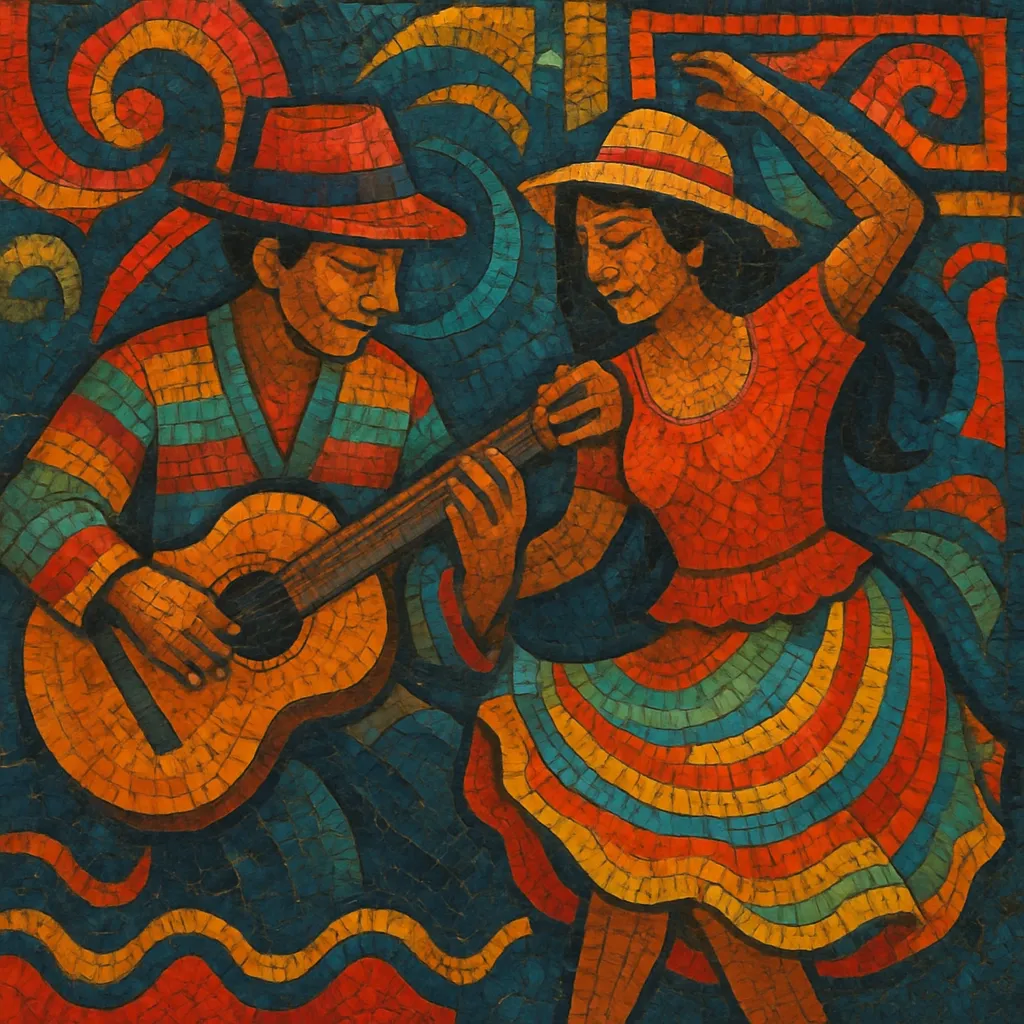Chicha is a Peruvian branch of cumbia that crystallized in urban migrant neighborhoods during the late 1960s and 1970s. It fuses Colombian cumbia rhythms with Andean huayno melodies, played on electric guitars that carry surf- and psychedelic-rock inflections.
The style is defined by bright, reverb-soaked lead guitar lines in pentatonic (often Andean) motifs, Farfisa- or Hammond-type organs doubling riffs, and a steady cumbia groove driven by drum kit, güiro, and congas. Lyrics frequently reflect internal migration, working-class life, love, longing, and the bittersweet experience of cultural hybridity in Lima and other Peruvian cities.
Chicha is sometimes called cumbia peruana (though that umbrella also includes Amazonian cumbia). Its imagery and street-poster aesthetics—neon colors and bold typography—became synonymous with the sound’s vibrant, grassroots identity.
Chicha emerged as Andean migrants settled in Lima, bringing huayno melodies and sensibilities into dialogue with the Colombian cumbia beat that had spread across Latin America. Peruvian bands electrified cumbia with surf and psychedelic rock textures, centering the electric guitar instead of accordion or brass. Pioneers such as Los Destellos (led by Enrique Delgado), Manzanita y su Conjunto, and urban combos in Lima shaped the sound, while Amazonian groups like Juaneco y su Combo and Los Mirlos brought a rainforest timbre to the same guitar-forward, groove-heavy approach.
By the early 1980s, chicha had become the soundtrack of working-class barrios. Acts like Los Shapis and the charismatic singer Chacalón (with La Nueva Crema) took the music to mass audiences through radio, dance halls, and open-air festivals. The songs spoke directly to migrant experiences, helping cement chicha as a cultural expression of urban, Andean-heritage Peru.
The 1990s saw the rise of tecnocumbia and other pop-oriented tropical styles, which competed with and sometimes overshadowed classic chicha bands. Nevertheless, chicha remained a staple at local parties and regional circuits, retaining its identity as a proudly popular, community-rooted music.
Reissue projects and compilations (notably “The Roots of Chicha”) sparked international interest in the 2000s, reframing chicha as a form of “psychedelic cumbia.” Contemporary bands and DJs in Latin America and beyond drew on its guitar riffs and hypnotic grooves, influencing digital/nu-cumbia scenes and inspiring a new generation of Peruvian groups to revisit and modernize the classic sound.


